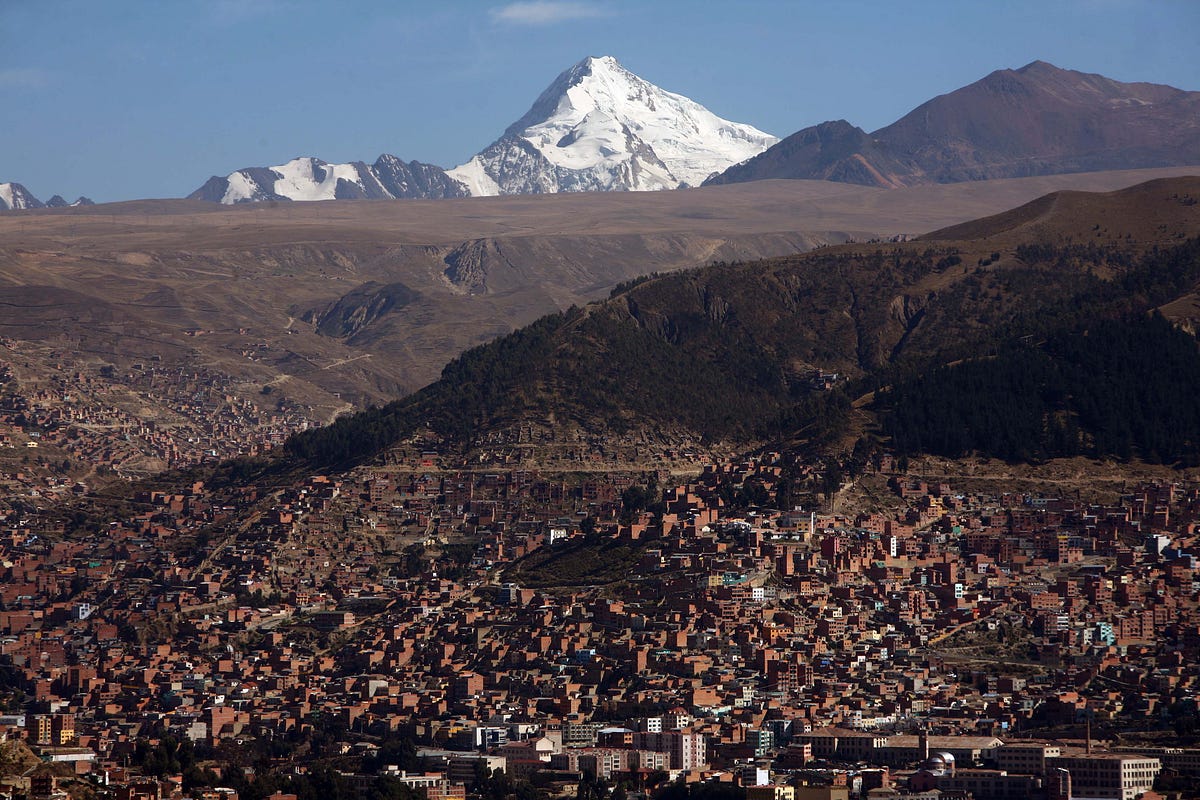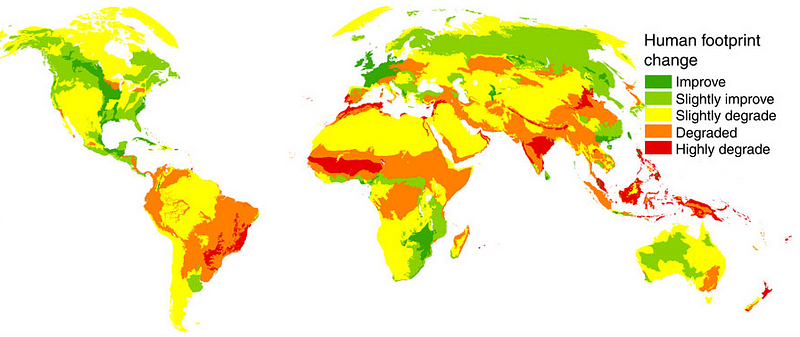Interesting follow up to the story we just ran on coffee crops in danger because of climate changes curbing their cultivation. Here's some good news. We clearly are getting smarter and much more efficient.
This is clear motivation to keep making investments in transformation, clean tech and sustainable improvements across the board and globe. Accelerating the pace of those investments could keep us ahead of the growth in people and use of natural resources. Our future could go from gloom to rosy with a tremendous surge in economic and environmental gains.
Humans Are Completely Altering The Earth, But There Might Be Some Good News
by Natasha Geiling
It’s bad, but it could be a lot worse.

For anyone interested in how human activity is altering the planet, a new study published Tuesday in Nature Communications has some good news, and some bad news.
The
good news: Despite the fact that both economic activity and human
population increased at near-breakneck speeds between 1993 and
2009 — growing at 153 percent and 23 percent respectively — the human
footprint has increased at just 9 percent, a significantly slower rate
than either population or economic activity. And that, the researchers
conclude, is reason for some optimism.
“We are becoming more efficient in how we use natural resources.”
“Seeing
that our impacts have expanded at a rate that is slower than the rate
of economic and population growth is encouraging,” Oscar Venter, an
associate professor at the University of Northern British Columbia and
lead author of the study, said in a statement. “It means we are becoming more efficient in how we use natural resources.”
The
bad news, however, is that despite the fact that the human footprint
has grown at a relatively slow rate, compared to economic and population
growth, almost three-quarters of the world is still under measurable
pressure from human activity.

To
get a detailed sense of how human activities have left their mark on
the planet, the researchers relied on satellite data to map eight
factors: the extent of built environments, crop land, pasture land,
human population density, night-time lights, railways, roads, and
navigable waters. The researchers then compared the impact that each of
these categories had on the environment, relative to the other
categories, for every square kilometer of land on Earth (they excluded
Antarctica). What they found was that about 75 percent of the planet is
under pressure from human activity, with areas that harbor high levels
of biodiversity facing the most intense pressure.
That’s
consistent with a growing body of scientific literature, which argues
that humans have changed the Earth to such an extent that they have
actually created an entirely new geologic time period, known as the Anthropocene.
Environmental Damage Is Bad Enough To Create A New Geologic Period
For over a decade, both climate activists and scientists have used one word to describe the mass-level changes humans…thinkprogress.org
For over a decade, both climate activists and scientists have used one word to describe the mass-level changes humans…thinkprogress.org
“In
the context of the Anthropocene, this sort of measure of how the Earth
is changing is another facet,” Jan Zalasiewicz, a professor of
palaeobiology at the University of Leicester and chair of the Anthropocene Working Group,
who was not involved in the study, told ThinkProgress. “All the changes
that are talked about will leave some sort of track in the fabric in
the Earth.”
Zalasiewicz
cautioned that while the findings that humanity’s footprint is
increasing at a rate slower than both economic or population growth is
certainly means for optimism, the metrics with which the researchers
measured the human footprint are fairly narrow in scope. The researchers
did not, for example, look at the increase in atmospheric carbon
dioxide created by human activity in their calculation of the human
footprint — something scientists like Zalasiewicz is certainly a large
part of how humans are changing the environment.
“Looking at the parts of the planet that are still wild and finding ways of keeping them as they are…should be something that we’re really thinking about.”
“Some
key aspects of the Earth system are not being taken into comparison,
simply because of the methodology that they are using,” he said.
“Clearly that rise in CO2, when it translates to a rise in temperature,
is going to amplify the human footprint effect globally.”
Relying
on satellite data — even the increasingly fine data provided by
improved satellite technology — misses other human-driven impacts, like
water pollution from agriculture or air pollution from cars, power
plants, and other pollutants. And while some of these pressures — like
pollution, excessive hunting, or invasive species — might be closely
associated with factors that the researchers did measure, like urban
sprawl or agriculture, the researchers do note that their exclusion does
generally limit the study.
The
report also notes that human activity is not having an equal impact on
all parts of the world, and while some wealthier places have exhibited a
decrease in their human footprint, other places — especially most
species-rich places on Earth— face an increase in pressure.
“They’re quite unique, and once they’re gone, they’re really gone,” study leader Venter told National Geographic.
“I think looking at the parts of the planet that are still wild and
finding ways of keeping them as they are, keeping them free of humans,
should be something that we’re really thinking about.”

No comments:
Post a Comment